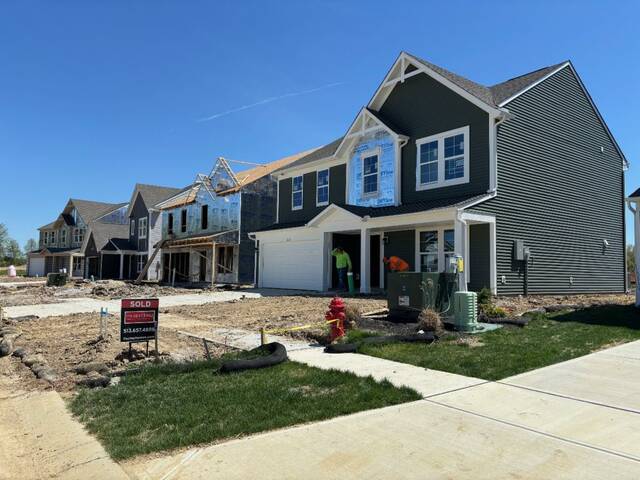BATAVIA, OHIO (July 14, 2025) – To keep pace with its rapid population growth, Clermont County will need to address housing challenges in a unified, collaborative way with the many cities, villages, townships and other stakeholders that make up the overall community situated some 30 miles east of downtown Cincinnati.
That was a primary finding housing consultant Urban Partners shared with county commissioners during the board’s most recent public meeting on July 9 in Batavia. The Philadelphia-based firm outlined the results of its data analyses, stakeholder feedback, survey results and recommendations as part of the county’s first-ever comprehensive housing study.
“No single municipality has the capacity or resources to resolve these complex issues alone,” Isaac Kwon, principal with Urban Partners, told the commissioners. “Meaningful progress will depend on coordinated efforts among the county, local governments, nonprofit organizations and the private sector.”
It won’t be a simple task to navigate given there are 25 villages, townships and cities stretched across the county’s 460 square miles, Kwon said.
Clermont County’s population has increased by nearly 32,000 residents, approximately 18 percent, since 2000 to an estimated total of 209,862 in 2023.
The county is conservatively projected to continue growing at least 1 percent per year over the next 20 years.
Construction activity across the county reflects the upward population trend, particularly in the western and central areas of Union, Miami and Batavia townships.
Multiple single-family residential housing developments and apartment complexes are under construction. Building permits issued by the county notched an annual record of 5,869 in 2024 on the heels of a record 5,780 permits in 2023. The trend is accelerating in 2025 with 3,212 permits issued January through June versus 2,238 during the first six months of 2024.
Urban Partners’ quantitative analyses included a focus on the current supply of owner-occupied and rental housing and expected future needs as well as demographic and employment trends, affordability, housing sales and rental-market conditions. The study included feedback from a survey of nearly 1,200 residents and more than 30 stakeholder interviews with elected officials, county and regional agencies, civic groups, school district officials, employers, home builders and developers, real estate agents and church leaders
In addition, Kwon highlighted the following key findings from the study:
– Clermont County has been growing rapidly and is projected to continue growing for the next 20 years.
– Though household sizes are getting smaller, newly built homes are getting larger, exacerbating challenges of housing attainability.
– Even with new and ongoing multi-family construction, vacancy rates for rental housing remain critically low.
– Growth potential for non-urban areas is limited by infrastructure capacity.
– Despite the relatively high median household income, 19,000 Clermont County households are struggling with housing cost burden (meaning the cost of their combined mortgage, taxes, insurance and utilities exceed 30 percent of their income)
– Land use and zoning policies as well as community opposition significantly restrict housing production
As part of the report, Kwon recommended the following strategies to help address housing-related challenges:
– Foster community support for a diversified housing stock.
– Target development in growth and high-demand areas.
– Preserve and improve aging housing stock.
– Expand housing options for the growing senior population.
– Reduce barriers to entry for first-time home buyers.
“This study is an important benchmark that provides fresh and useful insight and also confirms some of our own observations,” said Kris McClintick, director of the county’s Department of Community and Economic Development. “It is a great tool that will help guide our decision-making for planning, zoning and permitting as Clermont County continues to grow, attract new residents and employers.”
The study, which kicked off in 2024, was funded by a federal Community Development Block Grant.
For more details, view the consultant’s presentation online at www.clermontcountyohio.gov/. The full 200-page report will be posted online and shared later this summer after the commissioners have reviewed and adopted it.
Subscribe to The Clermont Sun today!
https://www.clermontsun.com/subscribe

